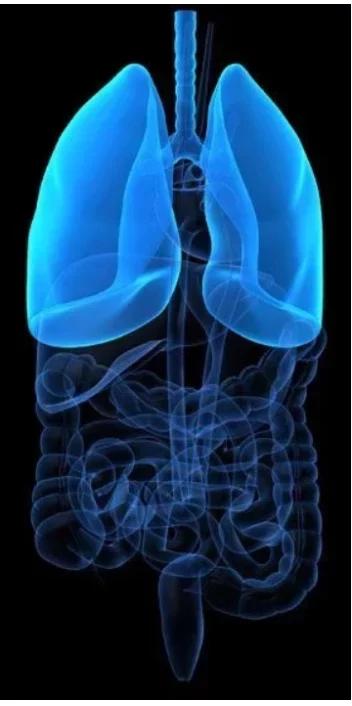Article
Osimertinib Displays Uniform Brain Penetrance and Reduced Metastatic Volume in EGFR+ NSCLC
Author(s):
January 28, 2021 - Rapid, high, and uniform brain exposure was seen with [11C]osimertinib, followed by a reduction in total brain metastases volume with oral administration of the EGFR TKI in patients with EGFR-mutant non–small cell lung cancer and brain metastases.

Rapid, high, and uniform brain exposure was seen with [11C]osimertinib, followed by a reduction in total brain metastases volume with oral administration of the EGFR TKI in patients with EGFR-mutant non–small cell lung cancer (NSCLC) and brain metastases, according to findings from the phase 1 ODIN-BM study (NCT03463525) that were presented during the 2020 World Conference on Lung Cancer Singapore.
Regarding [11C]osimertinib uptake, uniform brain distribution of [11C]osimertinib was recorded in all patients at all 3 time points with PET exams after intravenous (IV) microdose administration (n = 4). MRI also illustrated reductions in total brain metastases volume (range, 55%-95%) after 3 to 4 weeks of treatment with oral osimertinib (Tagrisso). T1-weighted MRI scans also illustrated tumor reductions after 35 days of treatment with oral osimertinib in 1 patient.
“These data support uniform brain distribution of osimertinib in patients with NSCLC and brain metastases,” wrote the study authors in a presentation of the data.
Central nervous system (CNS) metastases occur in 40% to 50% of patients treated with first- or second-generation EGFR TKIs within 3 years of diagnosis and are associated with poor prognosis and quality of life in patients with NSCLC.
Osimertinib is a potent and selective third-generation, irreversible, oral EGFR TKI that inhibits EGFR and EGFR T790M. The agent is approved for use as a frontline treatment for patients with metastatic EGFR-mutant NSCLC and as adjuvant treatment following tumor resection in patients with EGFR-mutant NSCLC.
In the phase 3 AURA3, FLAURA, and ADAURA trials, osimertinib demonstrated systemic and CNS activity in patients with EGFR-mutant NSCLC. PET studies in healthy participants have also demonstrated comparable blood-brain barrier penetration and brain exposure between [11C]osimertinib and CNS-specific drugs.
In the open-label, single-center study, patients underwent 3 PET exams following an IV microdose injection of less than 10 μg of [11C]osimertinib at baseline (PET1, day 1), 6 hours after the first dose of 80 mg of oral osimertinib (PET2, days 2-8), and 21 days after daily osimertinib treatment (PET3, days 22-29).
For PET2 and PET3, [11C]osimertinib IV microdoses were administered 6 hours after oral administration of osimertinib to fall within the median Tmax of the oral dose.
Change in volume from baseline, measured on high resolution contrast enhanced T1 MRI scans, was used to evaluate the treatment effect of osimertinib in brain metastases at baseline and day 25 to 35.
MRI-detected brain metastases were also subject to computer-assisted manual delineation into tumor shell (mass) and total tumor, including the core volume.
Following the study period, patients were allowed to continue oral osimertinib until the drug was no longer effective or discontinue treatment.
The determination of brain exposure of [11C]osimertinib in brain metastases at baseline (PET1) and change in PET signal after single (PET2) and multiple (PET3) administrations of oral osimertinib served as the primary end points of the study.
The evaluation of the pharmacokinetics of osimertinib and its metabolite AZ5104 after multiple administrations of oral osimertinib served as a secondary end point of the study.
The safety and tolerability of multiple oral administrations of osimertinib, the effect of osimertinib on brain metastases according to RECIST v1.1 criteria and volumetric analyses using brain MRI, and the treatment effect in extracranial regions using CT were also evaluated.
Eligible patients included adults 18 years or older, with a World Health Organization status of 0 to 2, a minimum life expectancy of 12 weeks, a histological or cytological confirmation of NSCLC, and MRI-confirmed CNS metastases. Patients were also required to be naïve to an EGFR TKI with local or central confirmation of an EGFR mutation, or have progressed on a prior EGFR TKI with a confirmed EGFR T790M mutation and documented radiological disease progression on immediate prior therapy.
Patients were excluded from enrollment if they had received an EGFR TKI within 10 days, or at least 5 times the half-life, or radiotherapy within 1 week of first osimertinib administration. Treatment with any cytotoxic chemotherapy, investigational agents, or other anticancer drugs within 14 days of first osimertinib administration, and prior osimertinib administration in the present study was not allowed.
Of 35 eligible patients, 10 provided informed consent, 6 of whom failed screening. The remaining 4 patients completed all study treatment and imaging assessments.
Additional results indicated that [11C]osimertinib was recorded in healthy brain tissue and brain metastases in all 3 PET exams, regardless of administration of oral osimertinib. [11C]osimertinib volume of distribution (VT) was comparable in brain metastases and healthy brain tissue at baseline.
“Differences in [11C]osimertinib-derived signal distribution between brain PET scans across the study were negligible, despite differences in plasma concentrations of cold osimertinib,” wrote the study authors. “This suggests that the [11C]osimertinib PET signal predominantly constitutes non-displaceable binding.”
Moreover, maximum concentrations of [11C]osimertinib in the brain were achieved 11 to 42 minutes (Tmax) after IV injection, with a mean exposure of 1.5% (standard deviation, 0.1%) of injected radioactivity. Whole brain radioactivity was sustained over the scan duration of approximately 90 minutes following Tmax.
Regarding pharmacokinetics, the steady-state mean systemic exposure to metabolite AZ5104 was approximately 13% compared with the parent compound osimertinib.
“Orally administered osimertinib was steadily absorbed into the systemic circulation and slowly eliminated with a flat pharmacokinetic profile across dosing intervals at steady-state,” wrote the authors.
The safety and tolerability data for osimertinib were consistent with the known safety and tolerability profile of the TKI.
Reference
- Ekman S, Cselényi Z, Varrone A, et al. A PET and MRI study exploring osimertinib brain exposure and efficacy in EGFRm NSCLC CNS metastases. Presented at: 2020 World Lung Conference on Lung Cancer Singapore; January 28-31, 2021; Virtual. Poster P76.72.








